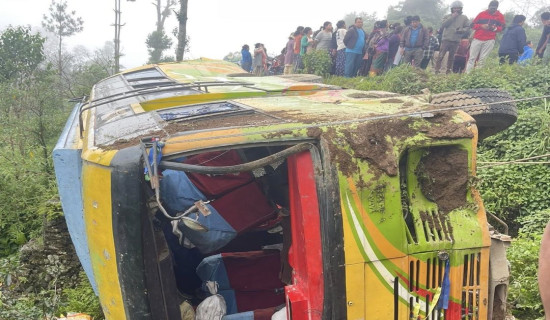- Saturday, 2 August 2025
Magic Of Nepali Food
Some memories don’t live in photographs or journals, they live in the senses. A sudden whiff of sautéed garlic, the earthy bite of fenugreek hitting hot oil, or the slow burn of cumin in a pan can pull you back decades in an instant. It doesn’t matter where you are, a restaurant in Thamel, a flat in London, or a lane in New York, if that smell finds you, you’re home again.
In Nepal, food is more than fuel. The kitchen, no matter how modest, is the warm, breathing heart of the house. It is the one place where, despite everyone’s busy routines, the family naturally comes together, often over the steam rising from the rice pot, and where time slows, if only for a meal.
Growing up in Nepal, mornings usually began with a hot cup of tea, the whistle of the pressure cooker, and the rhythmic grinding of masalas on a silauto. The aroma of Nepali cuisine didn’t just fill the room; it filled the stomach and offered the energy needed for the day ahead. Sometimes it was my mother behind the stove, her movements precise and quiet. Other times it was my grandmother, humming a tune from a radio long dead, her fingers moving with muscle memory built over decades.
They never spoke of recipes. Measurements were done by instinct, passed down not through words but through repetition. A pinch of this, a splash of that. The lentil didn’t just boil, it thickened slowly with stories, laughter, and the occasional scolding. Meat or vegetable curry wasn’t just sour and spicy, it carried the tang of monsoon evenings, power cuts, and the soft clatter of slippers on the cold floor.
When I was abroad for studies, living away from that kitchen, what I missed most was not just the taste, but the smell. The layered aroma of a home-cooked Nepali meal is hard to describe to someone who hasn’t lived it. It’s not just spices, it’s time, love, and memory. It’s the smoky flavour of rice cooked on a wood fire during load-shedding. It’s ghee melting into lentils while rain drums on the tin roof. It’s the careful frying of meat and vegetables, thickened with patience.
Sometimes I try to recreate it. I cook with my eyes closed, trying to remember how long she fried the onions, how she knew when the curry was just right. I come close, but it’s never quite the same. Something is always missing, perhaps the voices, perhaps the walls, perhaps the knowing hands.
But then again, that’s the magic of the Nepali kitchen. It’s not a recipe you follow, it’s a feeling you chase. A warmth that wraps itself around you like the smell of cooking oil in your clothes long after dinner is done.
Long after the kitchen falls silent, after the cook grows old and the utensils rust, that smell will live on. In our clothes, in our memory, in our hunger. In that one unexpected moment when a scent catches us off guard, and wherever we Nepali are around the world, we are home again.




-square-thumb.jpg)
-square-thumb.jpg)










